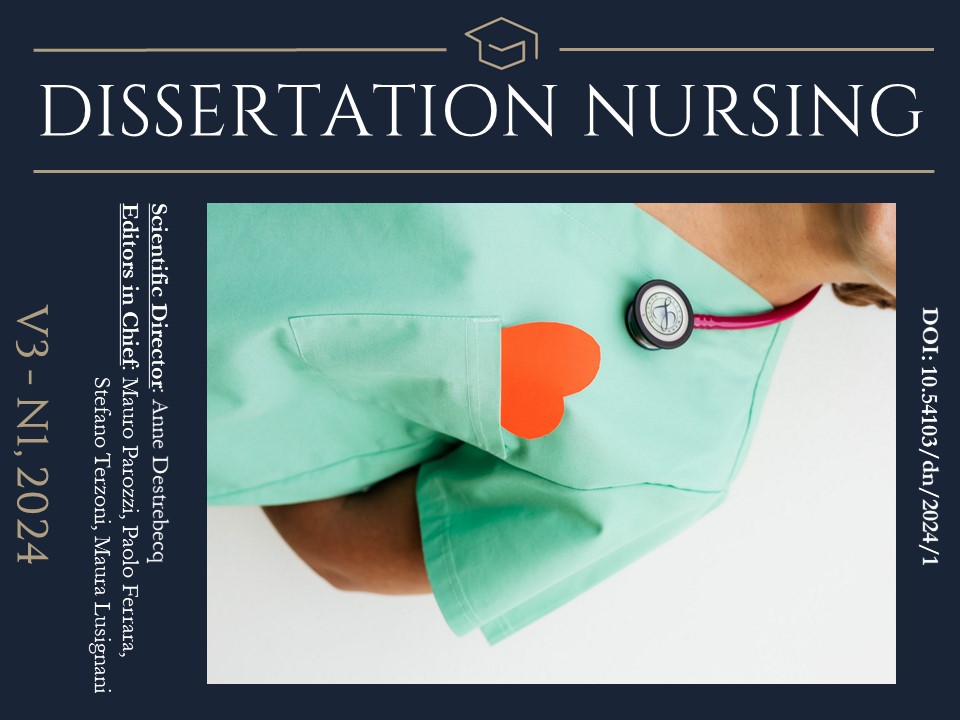The importance of a multidisciplinary team to increase corneal donation
The introduction of the figure of the Specialized Nurse in Organ Donation in the multidisciplinary team as a support for the coordination of the organ and tissue donation
DOI:
https://doi.org/10.54103/dn/20905Keywords:
organ donation, cornea donation, donor, nurse, procurementAbstract
Corneal donation represents the only treatment that can provide visual recovery and improvement of painful symptoms to individuals with visual impairment caused by corneal disease, leading to improved quality of life. In addition to being a therapeutic intervention for the recipient, donation is also an essential means of comfort for bereaved families and the possibility of self-determination for the deceased. However, there needs to be more clarity between the need for and availability of grafts. The causes of this important gap are mainly due to a need for more information on the population and training of health professionals.
The introduction of an integrated Procurement model effectively improves the entire donation process through the interaction of a multidisciplinary group consisting of physicians, nurses, the hospital management team, and the formally recognized figure of a nurse expert in organ and tissue donation.
References
Programma Nazionale Donazione di Organi 2018-2020; 2018. Disponibile all’indirizzo: https://www.trapianti.salute.gov.it/imgs/C_17_primopianoCNT_399_listaFile_itemName_0_file.pdf. (Ultima consultazione: 22 Settembre 2021)
Röck D, Wude J, Yoeruek E, Bartz-Schmidt KU, Röck T. Evaluation of factors limiting corneal donation. Ann Transplant 2016;21:701-7.
Barbosa de Sá Diaz FB, Ribeiro L, Chaoubah A. Analysis of the factors that influence the cornea donation process. Rev Enfermagem UFPE 2017;11(4):1692–700.
Ruta F, Lusignani M. Analisi delle conoscenze sulla donazione delle cornee popolazione adulta residente in una provincia della Puglia [Knowledge on the corneas donation in the adult population in a province of Apulia Region]. Prof Inferm 2019;72(4):253-259.
McGlade D, McClenahan C, Pierscionek B. Attitudes Underlying Corneal Donation in a Group of Trainee Allied Health Professionals. PLoS ONE 2012;7(12):1-6.
Mihailovic N, Bartel CC, Rosenberger F, Brücher VC, Eter N, Beyer T, et al. Attitudes and Knowledge Regarding Postmortem Cornea Donation among Young and Elderly People in Germany: Sufficient for Decision Making? Ophthalmic Res 2019;62(3):173-84.
Lawlor M, Kerridge I, Ankeny R, Dobbins TA, Billson F. Specific unwillingness to donate eyes: the impact of disfigurement, knowledge and procurement on corneal donation. Am J Transplant 2010;10(3):657-63.
Okoye OI, Maduka-Okafor FC, Eze BI. What does the medical student know about eye donation/corneal transplant? The University of Nigeria scenario. West Indian Med J 2010;59(1):41-4.
Williams AM, Muir KW. Awareness and attitudes toward corneal donation: challenges and opportunities. Clin Ophthalmol 2018;12:1049-1059.
Sarlo RA, Vargas ER. Project of Cornea Donation in Rio de Janeiro: Analysis of the Implementation of an Organization Innovation Practice. Transplant Proc 2019;51(6):1661-1666.
Ministero della salute [internet]. Roma: Centro Nazionale Trapianti; Report 2022 [consultato il 20.11.23]. Disponibile all’indirizzo: https://www.trapianti.salute.gov.it/imgs/C_17_cntPubblicazioni_605_allegato.pdf
Centro Regionale Trapianti Piemonte e Valle d’Aosta [internet]. Torino: Resoconto attività CRT 2022 [consultato il 20.11.23]. Disponibile all’indirizzo: www.trapiantipiemonte.it
Mahajan SV, Doshi D, Srilatha A, Karunakar P. Dental Student Knowledge and Willingness to Donate Corneas. Exp Clin Transplant 2019;17(3):398-403.
Oliva A, Zaghini F, Martelloni M, Fiorini J, Masci L, Pelei P, et al. Un modello integrato per l’identificazione dei potenziali donatori: un nuovo approccio nei trapianti di organi e tessuti. Prof Inferm 2019;72(4):267-71.
Etheredge HR, Penn C, Watermeyer J. A Qualitative Analysis of South African Health Professionals' Discussion on Distrust and Unwillingness to Refer Organ Donors. Prog Transplant 2018;28(2):163-169.
Salim A, Berry C, Ley EJ, Schulman D, Desai C, Navarro S, Malinoski D. In-house coordinator programs improve conversion rates for organ donation. J Trauma 2011;71(3):733-6.
International Registry in Organ Donation and Trasplantation [internet]. IRODaT database [consultato il 20.11.23]. Disponibile all’indirizzo: https://www.irodat.org/?p=database#data
Bleakley G. An overview of organ donation for support staff. BR J HealthC Assist 2019;13(7):350–3.
Opdam H. Increasing organ and tissue donation for transplantation. Transplant J Australas 2016;25(1):6-8.
Grallelis L, van Weerdenburg C, Mehakovic E. Professional Education Package for health care professionals involved in organ and tissue donation. Transplant J Australas 2017;26(2):6–9.
Ruta F, Delli Poggi A, Ferrara P, Lusignani M. Analisi degli atteggiamenti, delle conoscenze e della disponibilità a donare gli organi degli studenti di Infermieristica. Prof Inferm 2019;72(4):247-52.
Domínguez-Gil B, Delmonico FL, Shaheen FA, Matesanz R, O'Connor K, Minina M, et al. The critical pathway for deceased donation: reportable uniformity in the approach to deceased donation. Transpl Int 2011;24(4):373-8.
Jawoniyi OO, Gormley K. How critical care nurses' roles and education affect organ donation. Br J Nurs 2015;24(13):698-700.
Hoy H, Alexander S, Frith KH, Ng YC. The Effect of Transplant Education on Nurses Attitudes Toward Organ Donation and Advocacy for Transplantation. Prog Transplant 2017;27(2):175-179.
Majumdar M, Vuat J, Lambert K. Attitudes to end-of-life issues and organ and tissue donation amongst medical staff: a single-centre survey. Transplant J Australas 2014;23(2):18-22.
Sampaio JE, Fernandes DE, Kirsztajn GM. Knowledge of medical students on organ donation. Rev Assoc Med Bras 2020;66(9):1264-1269.
Ali NF, Qureshi A, Jilani BN, Zehra N. Knowledge and ethical perception regarding organ donation among medical students. BMC Med Ethics 2013;14(1):1.
Lomero MDM, Jiménez-Herrera MF, Rasero MJ, Sandiumenge A. Nurses' attitudes and knowledge regarding organ and tissue donation and transplantation in a provincial hospital: A descriptive and multivariate analysis. Nurs Health Sci 2017;19(3):322-330.
Hubner L, Miller C, Roberts C. Implementing a legislation change in organ and tissue donation in England. Br J Nurs 2020;29(3):168-169.
Tocher J, Neades B, Smith GD, Kelly D. The role of specialist nurses for organ donation: A solution for maximising organ donation rates? J Clin Nurs 2019;28(9-10):2020-2027.
Mangiacavalli B, Pulimeno AML, Mazzoleni B, Cicolini G, Cicia C, Draoli N, et al. Codice Deontologico delle Professioni Infermieristiche. FNOPI. 2019.
Downloads
Published
Versions
- 2024-02-01 (3)
- 2024-02-01 (2)
- 2024-01-31 (1)
How to Cite
Issue
Section
License
Copyright (c) 2024 Greta Palena, Finiguerra Ivana, Alberta Fratemali, Fabio Passet

This work is licensed under a Creative Commons Attribution-NonCommercial-NoDerivatives 4.0 International License.
Accepted 2024-01-22
Published 2024-02-01











